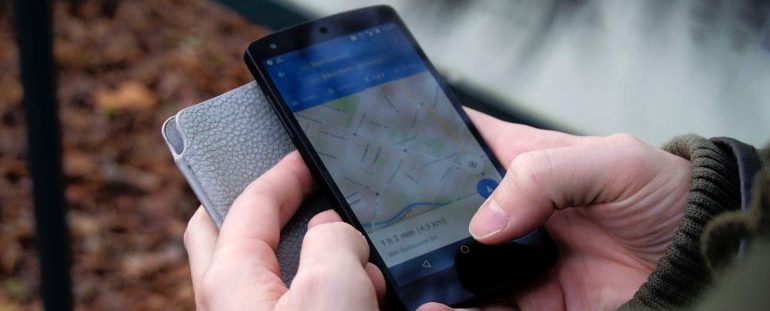
By Devinder Hans
When you have a smartphone with you, you are never lost or alone. Whether it is through GPS, cell towers, Wi-Fi networks or Bluetooth beacons, you can be tracked by the phone itself, your service provider or any number of installed apps. Phones also now incorporate a range of sensors that can tell when you are driving or walking. By identifying where you are, where you’ve been and how you got there, your phone can also infer your needs — including your need for legal services.
What is Geofencing?
Geofencing triggers certain actions based on your location. It’s made possible through GPS and nearby Wi-Fi networks, or (generally indoors) beacon technology using Bluetooth signals. The process begins with defining a geographic area (such as a hospital, restaurant or sports arena), then triggering a specified action when the phone enters, leaves or remains in the specified area. The geographic area can be further contextualized when combined with activity information. For example, an event may be triggered if the phone has been in the specified area for longer than an hour. Apps can also analyze phone sensor data to determine activities such as walking or traveling in a car and trigger different actions depending upon how you entered or left the location. Going further, retail stores can track which displays in the store attract a customer’s attention or determine that a customer visited the fitting room but did not make a purchase.
Using geofencing, an app can remind you to pick up milk when driving near a supermarket, offer you a coupon as you walk past a restaurant, and record that you always stop in the candy aisle after picking up your groceries.
Some Creative (and Potentially Problematic) Uses of Geofencing
Inspired by the old marketing adage of go where the customers are, some personal injury attorneys in Philadelphia have used geofencing to target patients in hospitals, physical therapist offices and pain centers. Anyone who entered such a facility in the city would begin to receive ads for personal injury attorneys for more than a month afterward. Speaking to NPR last year, a marketer using the practice described it as “the closest thing an attorney can do to putting a digital kiosk inside of an emergency room.”
Although broadly targeting all visitors of a medical center may not violate professional ethics, in some jurisdictions they may violate consumer protection laws. In Massachusetts, an advertising company used geofencing to target “abortion-minded women” by focusing on customers of reproductive health centers in several Eastern states. The company agreed to discontinue the practice in a settlement with the Massachusetts Attorney General to resolve allegations that the practice violated state consumer protection laws. The AG expressed concern that the practice was being used to digitally harass patients and interfere with health privacy.
Finally, in the third trial over the alleged toxicity of the weed killer Roundup, plaintiff attorneys requested an injunction to prohibit defendant Monsanto from allegedly using geofencing to advertise the safety of Roundup to persons within the courthouse. The attorneys reportedly heard from potential jurors from one of the earlier Roundup trials that those individuals began to receive pop-up ads promoting the safety of Roundup. In denying the motion, Alameda County Superior Court Judge Winifred Smith wrote that “[t]he court is not persuaded that the alleged geo-marketing is materially different from carrying signs outside a courthouse or carrying placards or wearing buttons inside a courtroom.”
Geofencing and the Rules of Professional Conduct
Attorney advertising is governed by Rules of Professional Conduct Rules 7.1–7.5 (formerly consolidated as Rule 1-400) and Business and Professions Code sections 6157-6159.2. Potentially relevant to geofencing, Rule 7.3 prohibits soliciting professional employment where “the solicitation is transmitted in any manner which involves intrusion, coercion, duress or harassment.” “Solicitation” is defined as communications offering to provide legal service “that is directed to a specific person.” Additionally, comments to Rule 7.3 clarify that “solicitations” do not include communications directed to the general public such as “an internet banner advertisement … or if it is … automatically generated in response to internet searches.”
Geofencing generally would not result in a violation of Rule 7.3. In formal ethics opinions, the State Bar of California has previously concluded that communications directed to the general public or a segment of the public, such as via a website or blog, are generally not prohibited solicitations, although depending on the content they may be subject to the rules and statutes regulating attorney advertising. However, using the technology to target a narrow group of prospective clients known to be in a vulnerable mental or emotional state may implicate the prohibition against intrusive, coercive or harassing communications.
Devinder Hans is an attorney at law.